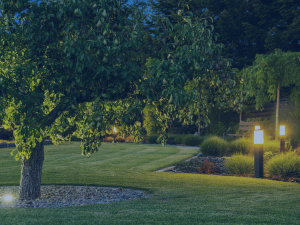Imagine stepping into your beautifully lit garden every evening without having to fumble with switches. That’s the magic of landscape lighting timers. Not only do they add convenience, but they also enhance the beauty, security, and energy efficiency of your outdoor spaces. This guide will help homeowners, DIY enthusiasts, and outdoor lighting designers understand the various types of landscape lighting timers, their benefits, and how to choose the best one for your needs.
Understanding Landscape Lighting Timers
Types of Timers Available
When it comes to landscape lighting timers, there are several options to consider. Mechanical timers are the simplest and most cost-effective. They use a dial and pins to set the on and off times. Digital timers offer more precision and flexibility, allowing you to program multiple settings for different days. Finally, smartlink smart timers can be controlled via smartphone apps, offering the ultimate convenience and integration with other smart home devices.
How Timers Work to Control Lighting Schedules
Mechanical timers operate by physically moving pins that trigger the switch to turn the lights on or off. Digital timers use electronic circuits to control the switch. Smart timers, however, connect to your home Wi-Fi network and can be controlled remotely. Understanding how these timers work is essential to making an informed decision about which type would best suit your lighting needs.

Benefits of Using Timers for Landscape Lighting
Energy Savings and Efficiency
One of the primary benefits of using landscape lighting timers is the significant energy savings they offer. By automating your outdoor lights, you ensure they are only on when needed, reducing unnecessary energy consumption. This leads to lower utility bills and a smaller carbon footprint, making your home more energy-efficient.
Enhanced Security and Safety for Your Home
Timers can also enhance the security and safety of your home. A well-lit exterior can deter potential intruders, while also providing safe pathways for you and your guests. With timers, you can ensure that your lights automatically turn on at dusk and off at dawn, maintaining consistent illumination without manual intervention.
Related Content: Decking Out Your Outdoor Kitchen
Buyer’s Guide How to Choose the Right Timer
Factors to Consider
When choosing a landscape lighting timer, several factors should be considered. First, think about the ease of installation. Mechanical timers are usually the easiest to install, while digital and smart timers might require a bit more technical know-how. Next, consider the power source—do you need a battery-operated timer, or can it be hardwired? Weather resistance is another crucial factor; make sure the timer is rated for outdoor use to withstand the elements.
Tips on Matching Timers to Your Lighting Design and Needs
Matching the right timer to your lighting design can enhance the overall aesthetic and functionality of your outdoor space. For instance, if you have a complex lighting setup with different zones, a digital or smart timer with multiple settings might be the best fit. On the other hand, for a simple setup, a mechanical timer could be sufficient.
Top Picks Recommended Landscape Lighting Timers

Highlight a Selection of High-Quality Timers
Here are some top picks to consider:
- Intermatic T101 – A reliable mechanical timer known for its durability and ease of use.
- Honeywell RPLS740B – A versatile digital timer that offers multiple programming options.
- Philips Hue Outdoor Smart Plug – A smart timer that integrates seamlessly with other smart home devices.
Each of these timers offers unique features and benefits, making them excellent choices for different needs and preferences.
Installation and Maintenance Tips
Step-by-Step Guide to Installing Timers
Installing landscape lighting timers can be straightforward if you follow these steps:
- Turn Off Power – Ensure the power to your outdoor lighting circuit is turned off.
- Mount the Timer – Depending on the type, mount the timer near your light switch or within the circuit.
- Connect Wires – Follow the manufacturer’s instructions to connect the timer to your lighting circuit.
- Set the Timer – Program the timer according to your desired schedule.
Tips on Maintaining and Troubleshooting Timer Issues
Regular maintenance can extend the life of your timers. You should clean them periodically to remove dust and debris. If you encounter issues, such as the timer not turning on or off, check the wiring connections and ensure the programming is correct. For smart timers like those on offer by Outdoor Link, ensure your Wi-Fi connection is stable.
Conclusion
Landscape lighting timers are a fantastic addition to any outdoor space, offering convenience, energy savings, and enhanced security. By understanding the different types of timers, their benefits, and how to choose and install them, you can make an informed decision and enjoy a beautifully lit landscape with minimal effort.
Ready to transform your outdoor lighting? Explore our recommended timers and bring your garden to life with the perfect lighting schedule. Your evening strolls are about to get a whole lot brighter!
Additional Resources
For more tips and product recommendations, visit our blog and join our community of outdoor lighting enthusiasts. Whether you’re a homeowner, a DIY lover, or a professional designer, we have the insights you need to illuminate your space beautifully and efficiently.
This comprehensive guide aims to equip you with all the knowledge you need to choose and install the perfect landscape lighting timer. Enjoy the process, and happy lighting!
You May Also Like This Post on Lawn Edging and Landscape Design


